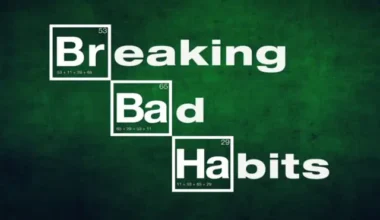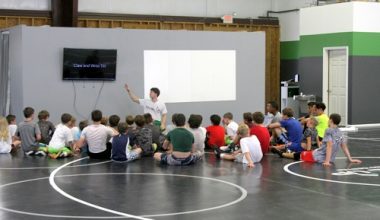In a different post, I provide tips for verbally explaining technique that will improve how quickly and effectively your wrestlers pick things up. Here I go beyond that and give you some ways you can more effectively demonstrate and teach moves.
Break it down & drill the parts separately
The simpler the technique, the easier it is to learn. A new layer is then introduced 1-2 at a time until they are able to perform the whole sequence. As a result, they are also now getting hundreds of reps of that initial basic skill in a single practice.
For example, if teaching a post set up to a high crotch, have them separately drill the timing of tugging the head, posting the elbow up, stepping and level changing. Then have them drill starting only from the level changed “attack” position with the post arm up and turning the corner. Then pull it together to drill the whole sequence together.
Finish first philosophy
I teach the finish to a move first and then work backwards. This is broken into parts just as mentioned above. They need to know what the ultimate destination is and what success feels like in order to want to fight through the resistance that will be thrown at them when trying to get there.
Don’t show more than one technique
When possible try to keep them focused on only one technique at a time. This will shorten the time you need to talk and also improve retention. Otherwise they will get confused and mix the two concepts up. If there are two very subtle variations, then you can get away with this but usually try to avoid it.
Show it Slow, Medium and Fast
Kids need to visually see and hear you talk through a move slow, but also need to see how it should look drilling it and the pace to hit it live. Many coaches forget to show a live/fast paced version of the move but this is CRITICAL to their understanding of what an ideal state looks like.
Give them time to try, fail and fix
If you are only giving them 5 minutes to drill a move, you might as well have not even shown the move at all. There is no possible way they can retain, much less get the basic concept in 5 minutes. I typically allot 20-25 minutes when showing a new technique.
- About 3 minutes of instruction
- 5 minutes to try it
- Another 2 minutes for me to correct and adjust
- 10-15 minutes to get reps on the move and help work the room to fix individual mistakes (after a few minutes, I tell the partner to start giving more resistance so that it “feels like live” and they learn how to make small adjustments facing counters.)
Stay patient and embrace failure
Just because they don’t pick it up right away, doesn’t mean they won’t be good at wrestling. Some of my best wrestlers who went on to win Fargo took weeks to pick up a new skill. When you demonstrate patience, they won’t feel as frustrated as well and prevents thoughts like, “I just can’t learn this move. Maybe it’s not for me”
Celebrate when they get it
“Boom! That’s the way it should look in a match. You’re gonna destroy kids with that!” This extra praise (only when warranted) will positively reinforce the behavior. You can even then have them show it off to the group to cement it as a move they will now use.
Corrective sparring
It’s one thing to drill a move when the partner isn’t fighting it. It’s another to deal with the resistance they will feel in a match. THIS is the biggest gap between applying (or even trying) a move during live. They are confident they can do it conceptually, but they don’t know how to feel when or how to do it when someone is wrestling them back. Make sure you have the partner start giving 50-75% resistance after they start picking up a move correctly.
Teach in multiple ways
Each kid tends to learn in different ways. Some learn by watching, some by hearing, some by experiencing. For some, they need to be physically placed into the right spot so they can feel it. Get to know each wrestler but also make sure to use each method when demonstrating something new.
Have them mimic the coach
In the beginning, it helps do perform group drills where they face the front of the room and mimic exactly how the coach is doing it. Or I’ve found this also highly effective when working the room. I’ll just stop them and say, “here follow me and do it as I’m doing it”.
Partner needs to give the right feel
Make sure the partner is reacting the right way. If someone’s not getting it when working the room, jump in as the partner and walk them through how to do it step by step, then as a whole, then back with the partner again.
FREEZE Them & Correct
When they are doing something wrong, force them to freeze where they are having issues. Then correct the position and have them try again. Then have them drill it several times in order to make sure they are doing it right consistently.
Diagnose the root cause of mistakes
If you can find the root cause, it will usually fix most issues. Keep asking yourself “why”. It many cases it will come back to stance and basic positioning.
Demand excellence
While it may not click that day, be a stickler for details and have a high standard of expectations for mastering technique. Stay patient when they don’t get it, but still make them perform more reps. Don’t just practice until you get it right….practice until you can’t get it wrong.





